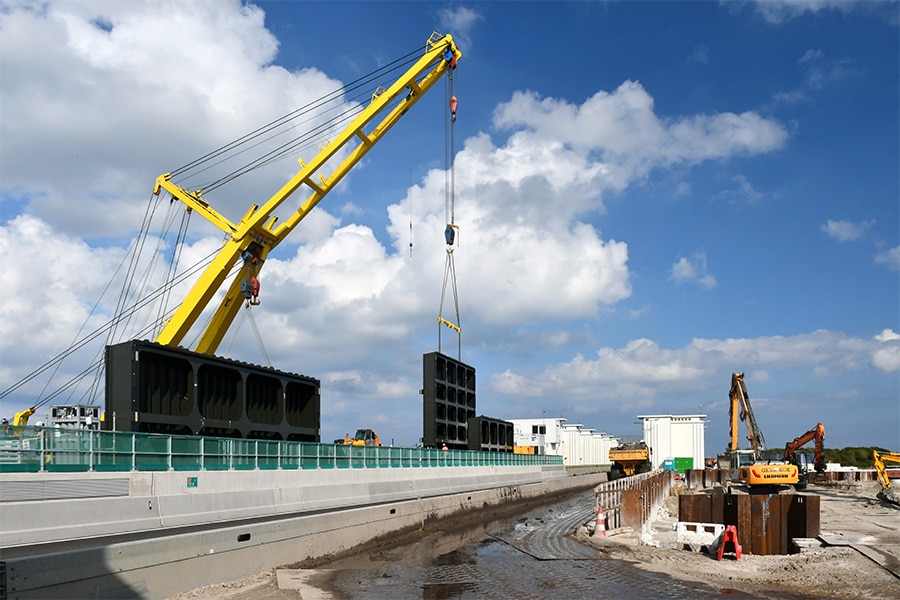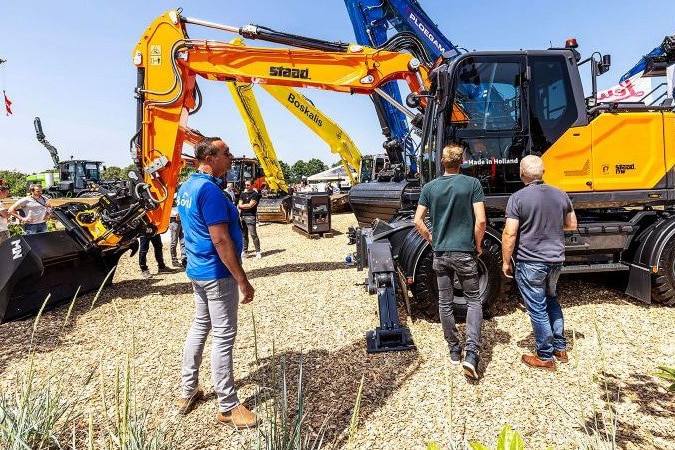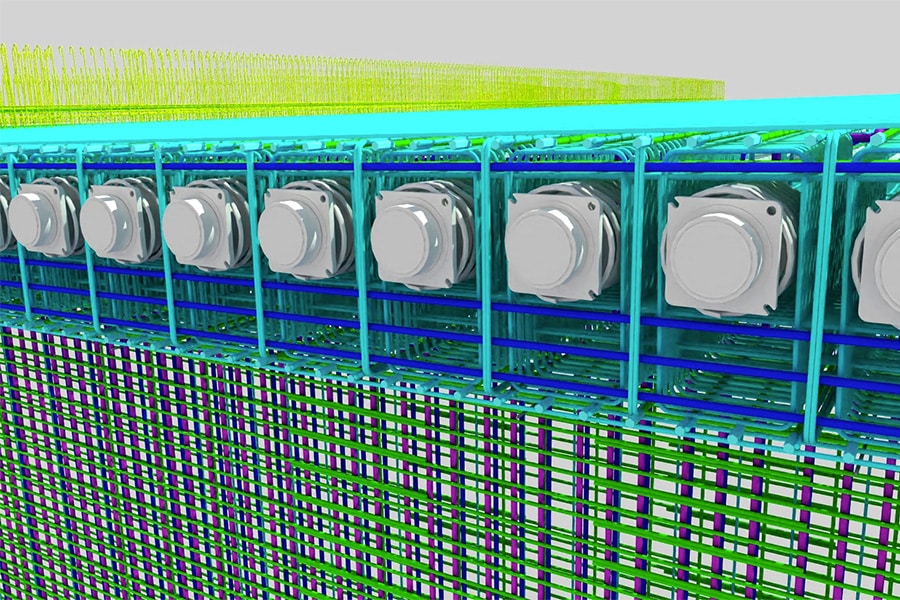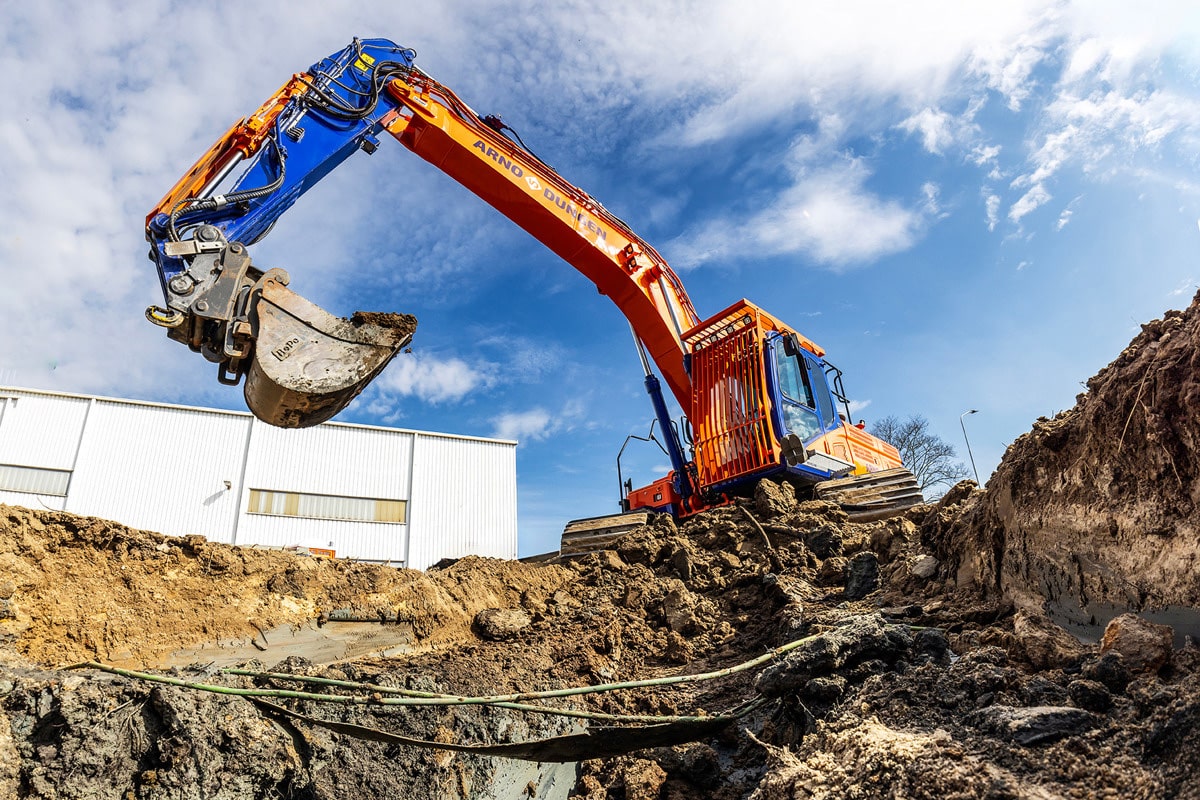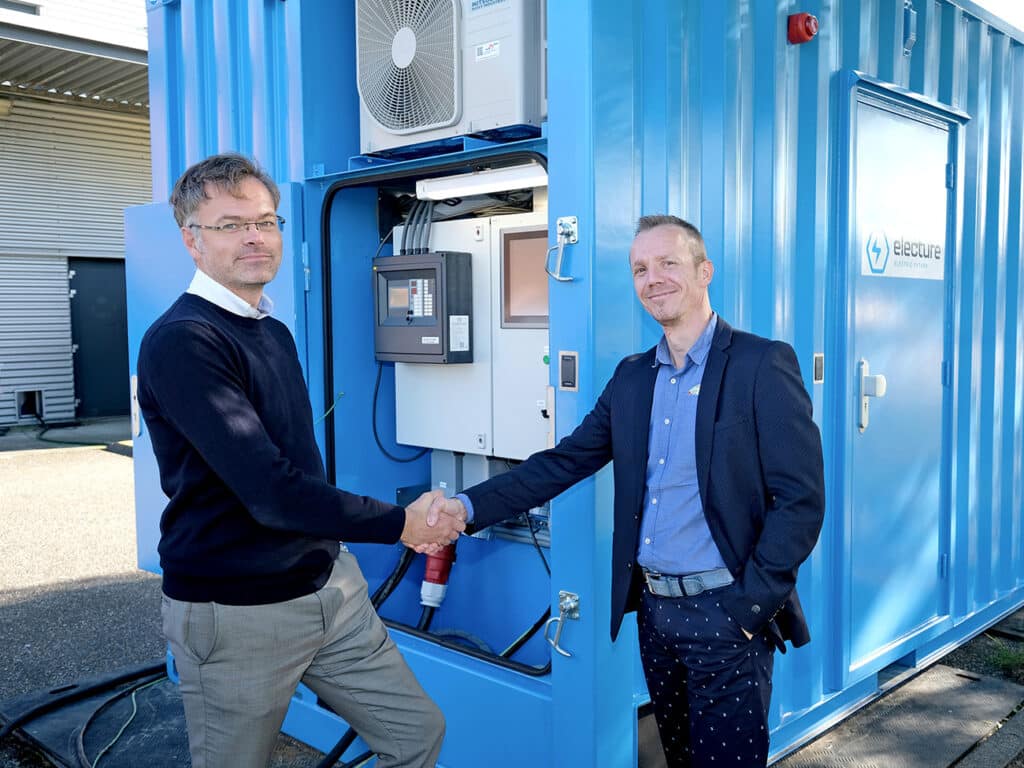
e-CO2tainer provides independence at A16 Rotterdam project. Sustainable power at any location
The advance of electric equipment creates new challenges in terms of infrastructure on a construction site. As the "spiritual father" of the e-CO2tainer, Jeroen Ritzer-van Dinther talks extensively about the sustainable solution Mobilis has found for independent, mobile power supply. A revolutionary idea that matured within a year and is now being actively deployed by construction consortium De Groene Boog.
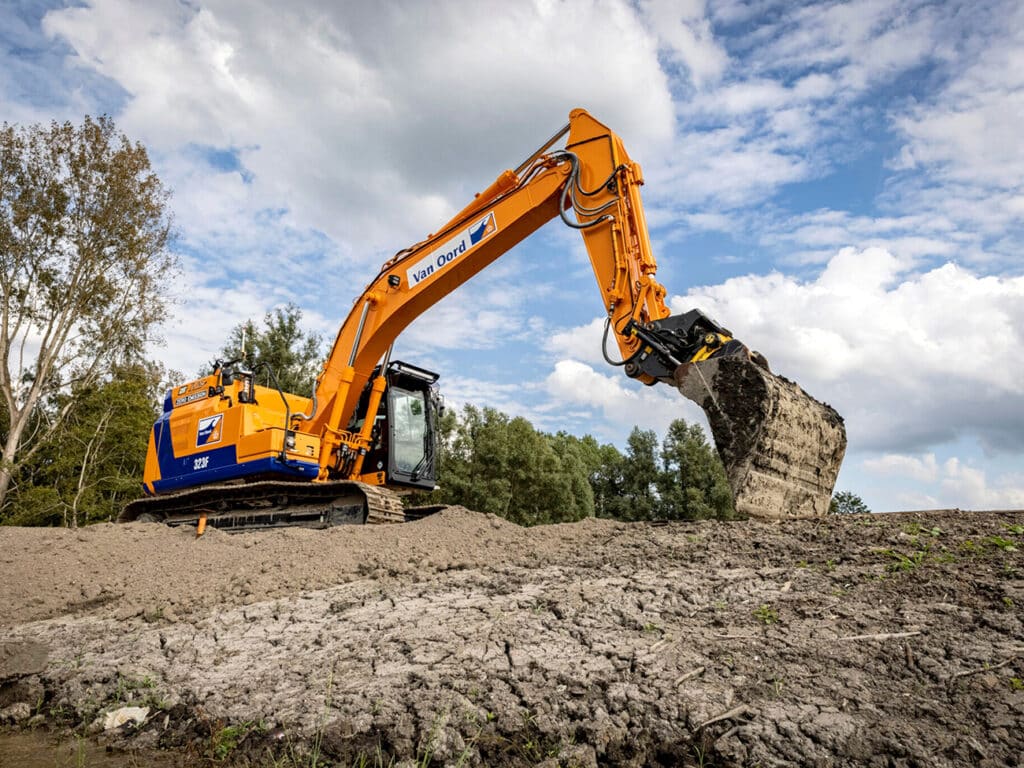
Power from a container
"The e-CO2tainer has been further developed into a fully deployable solution for providing sustainable energy at any location," says Ritzer-van Dinther. "After its introduction at the time, at Mobilis, we did not sit idle and I was able to make the e-CO2tainer my own branch. The company Electure was created for that purpose. The end result is a container measuring 6 x 2.5 x 2.5 meters, packed with energy technology. On board we find a generator that runs on HVO 100, the clean biofuel chosen by De Groene Boog. Furthermore, the container contains an impressive battery of
batteries, in addition to all the electronics that control everything and communicate with the outside world. It's 'power from a container' and clean, too."
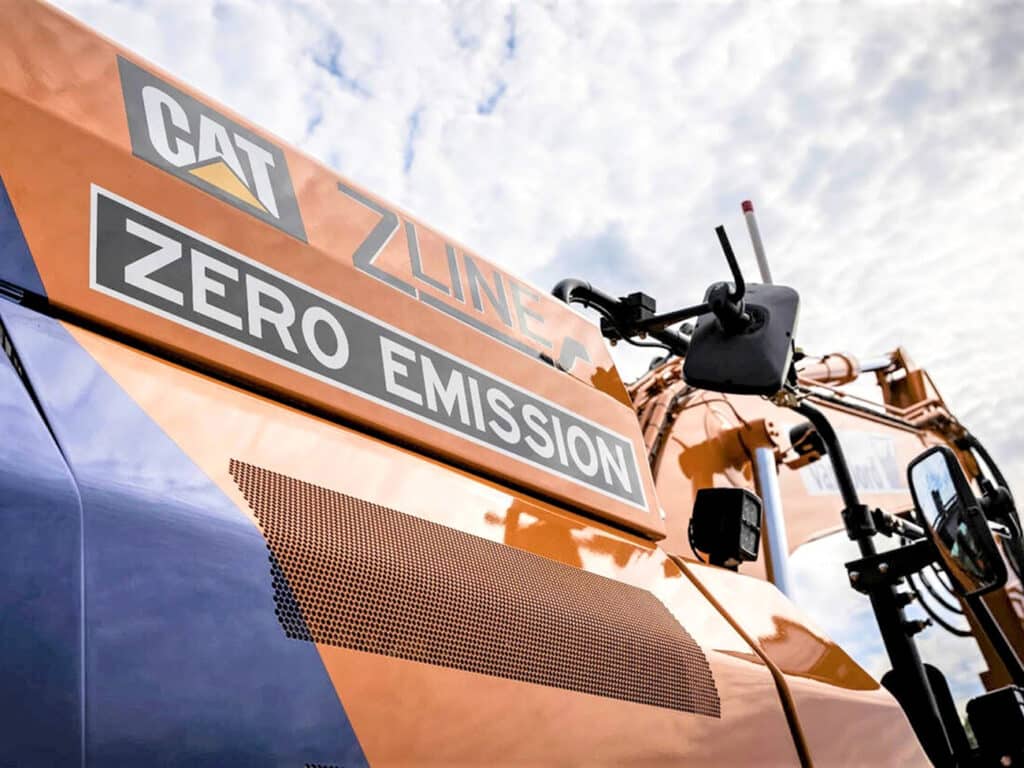
First Euro 5 HVO generator
The generator aboard the e-CO2tainer is the world's first Euro 5 certified HVO generator. "We are proud of that. In addition to the generator, we have batteries on board that add up to 240 kWh of power." On the outside of the container is a door for the contractor to access a display with numerous monitoring functions and contact information.
Also on the outside of the container: a 380 V 3-phase mains connection. This connection allows the batteries to be charged and can be supplemented by the grid if there is peak consumption. Outgoing power is controlled via 380 Volt CEE plugs: 1x 125 amp and 2x 63 amp. You can connect anything that needs power to that. That could be a "distribution mushroom" on construction sites, but also electrically powered equipment or vehicles. It is adjustable which power outlet has priority."
Control via a convenient app
Turning the e-CO2tainer on and off is conveniently done through an app. "We do that remotely. However, this is the 'back end' of the system, only we have access," explains Ritzer-van Dinther. At the time of this writing, one e-CO2tainer is already active, in subarea 1 of the project, where it provides power to the construction site. A total of five e-CO2tainers are planned for De Groene Boog.
Sustainability comes not only from the use of HVO as fuel or the use of batteries, but also from smart energy management. Ritzer-van Dinther explains, "With 'normal' diesel generators, these are in continuous operation, even when no power is being drawn. That causes a lot of CO2 and particulate matter emissions. The e-CO2tainer runs its generator only when it is really necessary, because when it is off-grid, everything runs over the batteries. If it is on-grid, i.e. connected to the grid, we look at the relationship between power input and power output. So we can always use the e-CO2tainer in the most efficient way possible."
A calculation
"An e-CO2tainer has higher fixed costs (purchase), but lower variable costs (consumption). You can buy an 'old style' diesel generator for less, but its consumption is many times higher. The combination of the e-CO2tainer and a grid connection also makes it interesting in terms of variable costs and sustainability. So it's a win-win situation. I firmly believe in the e-CO2tainer when it comes to TCO (total cost of ownership)."
The e-CO2tainer is a real 'TBI child' according to Ritzer-van Dinther. "Developed at Mobilis at the time and now built by our sister company Eekels. Nice to see how this concept has been further developed into a practical deployable solution!"
